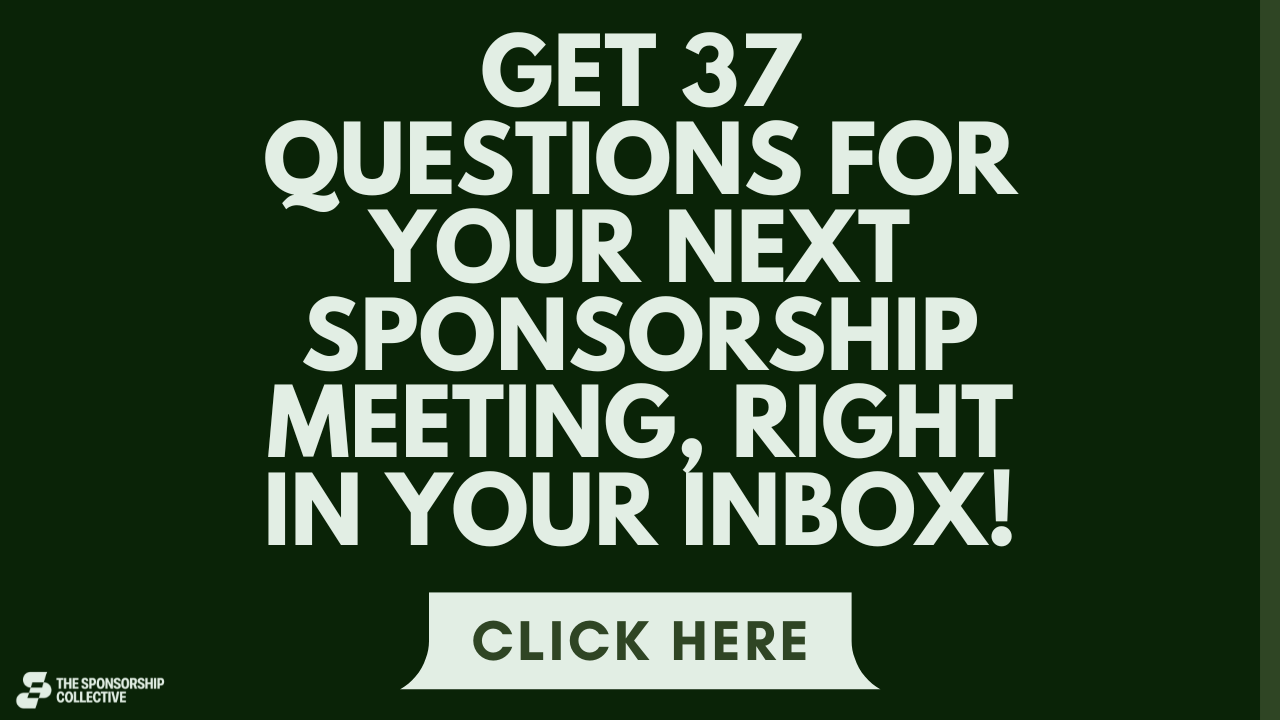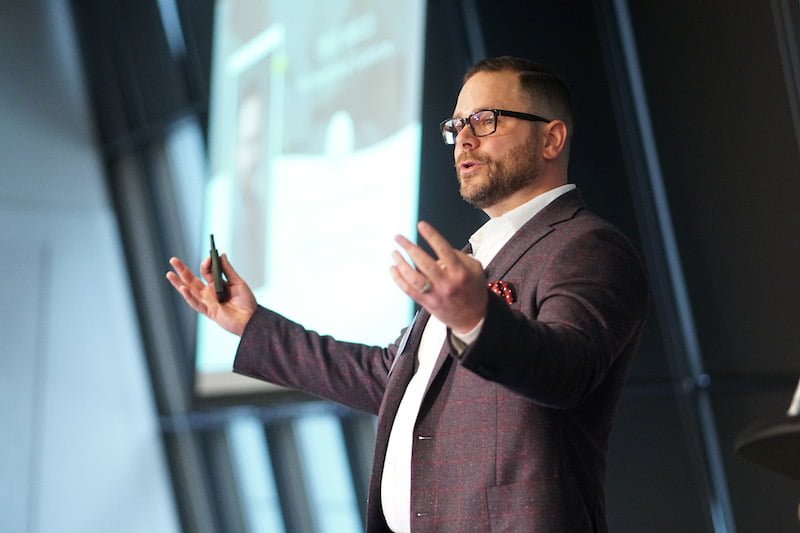Have you ever worked in tech support?
I did back when I was in college.
Even if you’ve never personally had a tech support job, I would bet you have experience using tech support, such as when your new iPhone begins randomly turning off or your Windows computer has a blue screen.
Now, there’s no need to check which blog you’re reading. You’re still here with me at the Sponsorship Collective.
The reason I’m talking about tech support is that my experience working that gig in college taught me a valuable lesson about sponsorship sales long before I was ever involved in sponsorship.
What is that lesson? That’s what we’ll talk about today, so keep reading. You won’t want to miss it!
My Valuable Sponsorship Sales Lesson…From a College Tech Support Gig
Like many college-aged adults, during my time at university, I had a job. The money helped pay for my tuition.
That job, as you now know, was in tech support.
Now was it the greatest gig? No, of course not, but as I said, it paid the bills. That’s what mattered at the time.
The recurrent complaint that I would get when at work is that the person’s computer wouldn’t turn on.
A common problem, right? And one that has a common solution.
Usually, that solution would be to plug the computer in. (You would be surprised how many people don’t do this!)
Now, if I suggested to the person right away what the solution was, they would swear up, down, and sideways that I was wrong and that there had to be something else they could do (even though the solution was correct).
So I started doing something different.
I began suggesting that the person on the phone do a hard computer reset, unplugging their computer from the wall (despite that it was usually never plugged in to begin with) and then accessing a panel on the back of the computer to look for warning lights.
I knew there would never be flashing warning lights because the computer wasn’t plugged in, but I would suggest this solution anyway.
Then, I’d tell them to wait two minutes, plug the computer back in, and try it again.
The solution was the same. Whether the person on the phone had just plugged in the computer right away or did my “hard reset,” they were fixing their problem, which was an unplugged computer.
So how does this tech support experience translate to sponsorship sales, I’m sure you’re asking?
Let me tell you.
If you offer a quick solution to a sponsor’s problem, or if you come up with a simple solution, they can lose faith and trust in you just as fast.
Coming up with the right answer is half the battle. Proving to your prospect that you hear them and understand what they’re going through is the other half.
If you fail in the second half, then even if you have a viable solution–such as plugging an unplugged computer into a wall–no one wants to hear it.
Sure, it’s nice to be right, but when the other party doesn’t accept your solution, then being right comes at a high cost.
The Importance of Discovery in Sponsorship Sales
Many sponsorship seekers make the same kind of mistakes my tech support customers did, often without even realizing what they’re doing.
If you hand a sponsorship prospect your sponsorship proposal before you even talk to the prospect, and if that proposal has gold, silver, and bronze tiers, that’s no good at all.
You might as well tell a tech support customer that they need to plug in their computer, no hard resets needed.
So what do I recommend as the antidote for this? I’m glad you asked!
The answer is the discovery session.
The discovery session is a one-on-one meeting with you and a sponsorship prospect.
I always liken it as a getting-to-know-you meeting, because deep down, that’s what a good discovery session should be.
You’re not having sales discussions. You’re not handing over your sponsorship proposal. You’re not talking about dollars (at least, not usually, you aren’t).
The goal of the sponsorship discovery session is this. You want to determine what the prospect’s pain points are and whether you can help them.
That’s it!
The kinds of questions you ask in a discovery session should help you reach that conclusion. Here are some questions I recommend you focus on as you have this initial meeting.
You could ask about the prospect company’s sales goals for the next year or even the next quarter.
By talking about sales goals, you’ll get a chance to hear about the prospect’s marketing plan and possibly their company budget as well.
Having even a rough idea of the company budget is great, as this indicates how much money the prospect may be willing to invest into a sponsorship arrangement.
You can also ask about the prospect company’s target audience. This gives you the opportunity to determine how your audience aligns with the prospect’s target audience.
Try asking what the decision-making process is like for the prospect’s average customer before they make a purchase.
Do they act independently, or do they need a nurturing campaign or discount code to inspire their purchasing decision? Does the prospect have to focus on building awareness or paying for marketing or advertising to boost sales? If so, how much?
You’ll notice that these questions do not have answers that you could have gleaned from Googling the company. I do want you to research your prospects before the discovery session but be aware that you can only find out so much information online.
The discovery session fills in your knowledge gaps so you fully understand who you’re talking to and what kinds of difficulties they’re facing.
You’re not recommending solutions right now. You’re just listening and gathering information.

Going Deeper with Your Questions
If you’ve read this blog, then you should be well aware that sponsors lie. I’ve talked about the rationale for this before, but let me tell you it usually isn’t anything malicious.
Rather, the prospect has no interest in your offer, but they don’t want to start a potential conflict by telling you that. They’ll tell you that they want to see your proposal and have another meeting, but they don’t mean it.
Since sponsors can sort of talk in double-speak, you have to get good at sniffing out which answers are truthful versus those that aren’t.
The best way to do that is to ask one simple question – “what do you mean by that?”
You could theoretically ask that question after getting any sort of response from a prospect.
Even if you ask a prospect how they’re doing and they say fine, following up with, “what do you mean by that?” forces them to give you a more truthful answer.
I don’t recommend you ask, “what do you mean by that,” anytime a prospect responds to you. It’s a little weird (okay, a lot weird) and can quickly derail the conversation.
Use this question sparingly but effectively and you’ll be able to bust through any double-speak and BS to get right to the heart of the matter.
Conclusion
In sponsorship sales, you don’t want to arrive at the conclusion that you can help a prospect too quickly. Jumping the gun assumes that you’re the smarter one who has all the answers, even when you necessarily don’t.
Fast-tracking a sponsorship proposal that a prospect doesn’t want is one of the fastest ways to blow a potential sale.
You’re not asking what the prospect needs or wants to achieve. You’re just assuming you can solve all their problems, usually without ever talking to the prospect!
Spend some time with your prospect. Ask some questions to fully understand what their issues and pain points are.
It’s only then, after you’ve talked extensively, that you earn the right to offer up a quick and easy solution, such as plugging in a computer that’s been unplugged the whole time.
More so, and most importantly, the prospect will be much more agreeable to your suggestion.

- About the Author
- Latest Posts
Chris Baylis is the Founder and Editor-in-Chief of The Sponsorship Collective.
After spending several years in the field as a sponsorship professional and consultant, Chris now spends his time working with clients to help them understand their audiences, build activations that sponsors want, apply market values to their assets and build strategies that drive sales.
Read More about Chris Baylis

